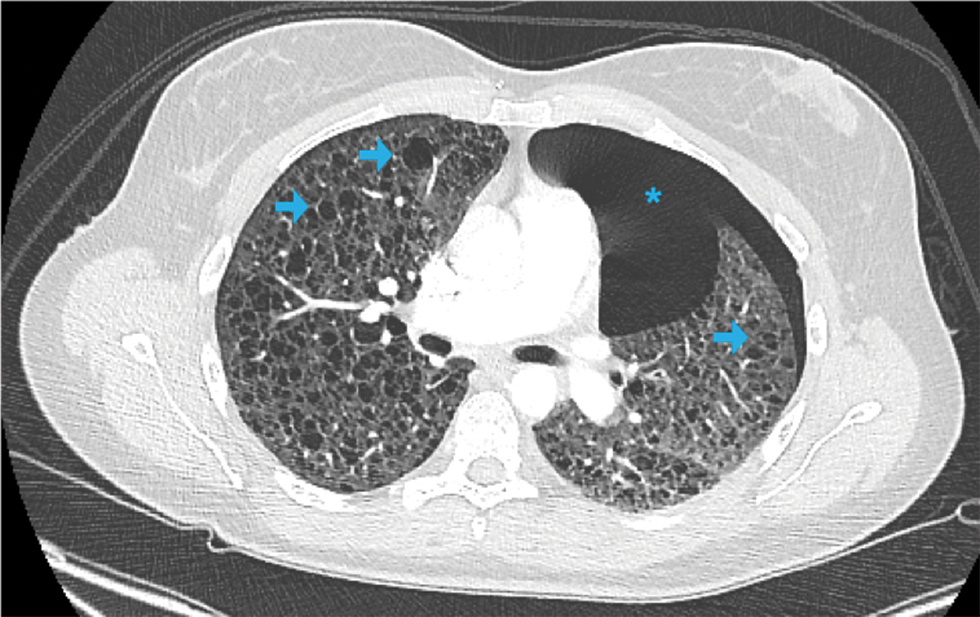Translate this page into:
Tuberous Sclerosis Complex with Lung Involvement
Arthur Robert Kurzbuch, MD Department of Service de Neurochirurgie Hôpital du Valais, Centre Hospitalier du Valais Romand (CHVR), Hôpital de Sion, Avenue du Grand-Champsec 80, CH-1951 Sion Switzerland kurzbuch@web.de
This article was originally published by Thieme Medical and Scientific Publishers Private Ltd. and was migrated to Scientific Scholar after the change of Publisher.
A 31-year-old woman, nonsmoker, known for tuberous sclerosis complex (TSC) underwent uneventful endoscopic resection of a growing subependymal giant cell astrocytoma localized in the left lateral ventricle. Two days after the operation the patient developed dyspnea. Computed tomography of the chest revealed a left-sided pneumothorax (blue asterix) and diffuse cystic changes throughout the lung parenchyma (blue arrows) consistent with pulmonary lymphangioleiomyomatosis (LAM; Fig. 1). TSC is an autosomal dominant disorder, resulting from mutations in chromosome 9 (TSC1 encoding hamartin) or chromosome 16 (TSC2 encoding tuberin), that manifests with multisystem involvement: skin, brain, heart, kidneys, and lungs. LAM affects predominantly women and is characterized by proliferation of abnormal smooth-muscle cells in the lung parenchyma that are responsible for cystic changes. Clinically, patients present with dyspnea and pneumothorax. The pneumothorax required draining for 4 days and the patient was discharged home 2 days later without further complications.

-
Fig. 1 Axial computed tomography of the chest shows diffuse cystic changes throughout the lung parenchyma consistent with pulmonary lymphangioleiomyomatosis (blue arrows) and a left-sided pneumothorax (blue asterisks).
Fig. 1 Axial computed tomography of the chest shows diffuse cystic changes throughout the lung parenchyma consistent with pulmonary lymphangioleiomyomatosis (blue arrows) and a left-sided pneumothorax (blue asterisks).
Conflict of Interest
None declared.
References
- Pulmonary manifestations in tuberous sclerosis complex. Am J Med Genet C Semin Med Genet. 2018;178(3):326-337.
- [Google Scholar]





